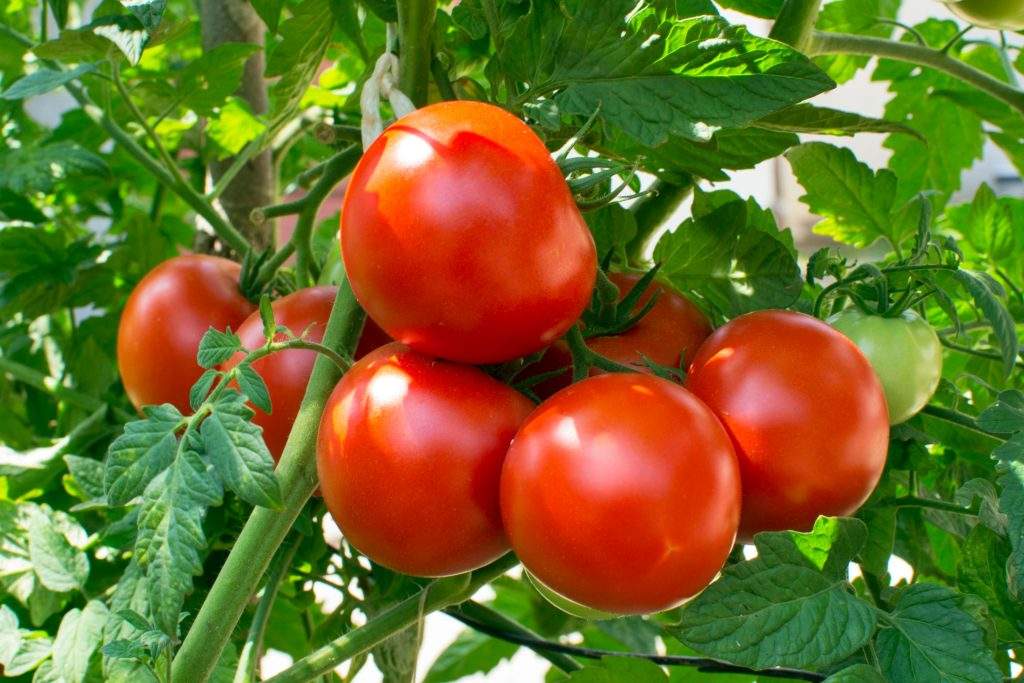
Essential Guidelines For Tomato Cultivation & Management
Tomato is one of the best veggies or fruits which are consumed throughout the year. It has many benefits and is practically grown in every country of the World. This superb veggie occupies over 4.73 million hectares area and produced 163.96 million tonnes in the World. Tomatoes are the World’s third largest fruit crop but considered a vegetable because of their nutritions. They are juicy and very healthy for summers. China, India, the USA, Turkey, Egypt, Iran, Italy, Spain, and Brazil are the largest tomato producing countries.

It is widely grown in the summer seasons between March and June. The local market and international market have a high demand for this super veggie tomato. Additionally, given its high demand, we can say that it is a very good business. And due to its high demand, tomato farming is now becoming very famous. So, if you want to start a business in the farming sector, then tomato cultivation is the best option.
Want to know about the process of tomato cultivation?
If yes, this blog is just made for you, as in this blog, we will provide a step by step cultivation guide of tomatoes that will help you during the tomato cultivation. In this blog, we showed essential guidelines for tomato cultivation & management. So, stay with the blog till the end, profitable for your knowledge. Let’s start!
Tomato Cultivation in India
Tomatoes are widely consumed veggie, using as raw and in cooked form. Our meal is quite incomplete without tomatoes. Tomato’s botanical name is Solanum Lycopersicum belongs to the family of nightshade. Southern and Central America introduced tomatoes to the World. However, now, this super veggie is produced in almost every country, including India.
In the production of tomatoes, India stands in the second position, after China. After potatoes, tomato is the only vegetable which is consumed broadly. This juicy vegetable is a primary or secondary ingredient in every kind of dish in India. At the same time, tomato is a healthy vegetable and a rich source of vitamin A, C, minerals, and potassium.
Many best tractors are available in the tractor market, perfect for different crops, fruits, and vegetables, including tomato cultivation. But Sonalika tractor is considered the best choice for tomato farming as it is designed with the latest technologies, performing tomato farming applications efficiently. Sonalika tractor is loaded with high engine capacity, robust body, large operator space, and many more features suitable for tomato cultivation. It is also affordable and profitable for all farmers who want to do tomato farming with a low budget.
Step By Step Guidelines of Tomato Cultivation
The warm weather and well-drained soils are the requirements of tomato farming in India. For the high growth of tomatoes, the warm season is the ideal season, and that is why it is called a warm-season crop. 20-25℃ temperature is good for tomato cultivation, and for the excellent quality red colour tomato, the 21-24°C temperature is perfect. 400-600 mm rainfall, 15-25°C harvesting temperature, and 10-15°C sowing temperature are essential for productive tomato growth. More than 43°C temperature (extreme heat) is worse for the tomato plant because of intense heat, the tomato plant burns. At the same time, below 13°C and above 35°C enhance the high-quality tomato production ratio.
As tomatoes can easily grow in every soil type, they well-grow on well-drained soils that have high organic content and good drainage ability. Sandy loam clay soil, black soil, and red soil with proper drainage are ideally suited for tomato farming in India. For productive growth, 6-7 soil PH with good drainage property is essential. Avoid High acidic soils for tomatoes farming as they are terrible for it.
- Land Preparation
Tomato plantations want well levelled and pulverized soil. Plough the land 4-5 times to mix the soil to a fine tilth. Later, do the planking process to make the soil level. At the last of the ploughing process, mix decomposed cow dung correctly on the land. Transplant tomato on a raised bed and prepare raised bed up to 80 – 90 cm width. Destroy all the soil-borne pathogens, pests, and organisms to keep soil quality. Use mulch for soil solarization as it absorbs radiation, increases soil temperature, and kills pathogens.
- Seedlings
After 25-30 days of the sowing process, the seedling is ready for transplantation. Before 24 hours of transplanting, water seedlings beds so that seedlings uprooted. Dip seedlings in 100 ppm Streptocycline solution for 5 minutes before transplanting to protect crops from bacterial wilt.
- Harvesting
After the process of sowing and irrigation, do the harvesting. After 70 days of transplantation, plants start yielding. Harvesting process starts as per fresh market, long-distance transport etc.
These are essential steps of tomato cultivation that help when you start tomato cultivation. We hope you liked the blog and for more such farming topics, tune in with us.
See Also:
Benefits Of Hiring Professional Pest Exterminators